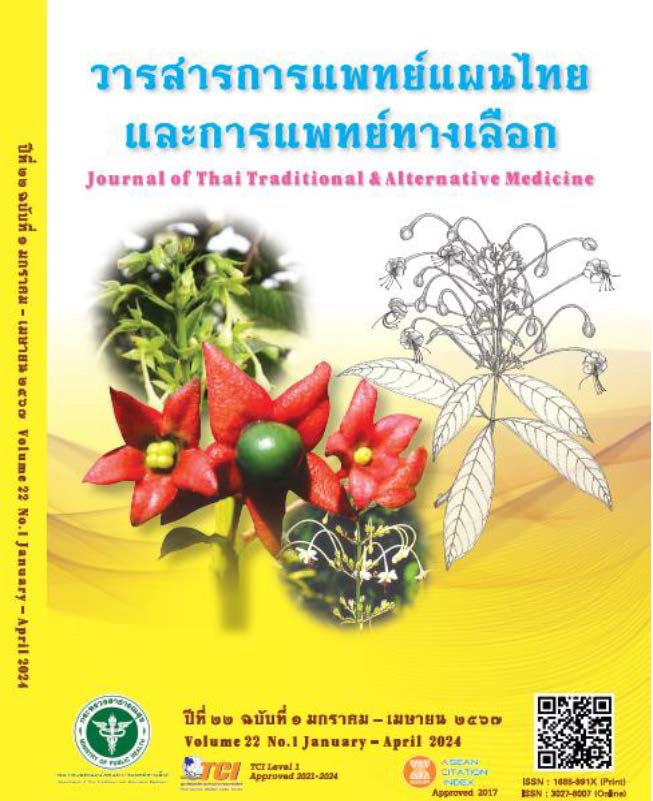Establishing Root Culture of Cannabis sativa L. for the Production of Active Compounds
Main Article Content
Abstract
Introduction and Objective: Cannabis ( Cannabis sativa L. ) family Cannabiaceae which its roots has been used in treatment of diseases. Disadventage of cannabis cultivation in natural environment are taking a long time less of constitient and contamination microbacterail heavy minerals. The objective of this study is to produced roots using suspensionculture tecnige
Methods: cannabis seeds was sterilized and then culture on MS media until the cotyledon, leaves and roots were appeared explant were culture on 6 different formula media. The roots obtained from suitable media were transform in to the liquid media.
Results: It was found that the most suitable media was 1.25 MS which consisted of growth regulators 6-benzylaminopurine and 1-naphthaleneacetic acid of the concentration 0.5 and 1 mg/L . After 15 days of suspension culture, the weights of roots obtained from cotyledons, leaves and roots were ( mean ± sd ) 0.35 ± 0.36, 0.41 ± 0.15 and 0.40 ± 0.14 grams respectively.
Discussion: Roots suspension culture of cannabis with the above processes and recipes. Reduce heavy metal and microbial contamination and increase root load quickly. Also found freidelin.
Conclusion and Recommendation: In The future, it will be used for the lage scale productory for future pharmacological study.
Article Details

This work is licensed under a Creative Commons Attribution-NonCommercial-NoDerivatives 4.0 International License.
References
Boonyaprapat N, Chokchaicharoenporn O. Medicinal Plants indigenous to Thailand. Bankok: Prachachon; 1996. 1 (1): p.169-177. (in Thai)
Pichiansunthorn J. Royal Bachelor of Fundamentals of Cannabis Plants, Alternative Medicine Science, Chandrakaom Rajabhat University and the Office of Science, Royal Academy .2019. (in Thai)
Natasha R. David J. and Ethan B. Cannabis Roots: A Traditional Therapy with Future Potential for Treating Inflammation and Pain. 2017;2(1)
Morin-Crini N, .Loiacono S, Placet V, Torri G, Bradu C, Kostic M, Cosentino, Chanet G, Martel B, Lichtfouse E and Crini G. A review Hemp-base adsorbents for sequestration of metalsEnvironmental Chemistry Letters (2019);17:393-408. Available from
https://doi.org/101007/s10311-018-0812-x
Murashige T and Skooge T. A revised medium for rapid growth and bioassays with tobacco tissue culture. Physiologia Plantarum. 1962;15: 473-497.
George EF, Hall MA, DeKlerk GJ. Plant growth regulators II: cytokinins, their analogues and antagonists. In: George EF, Hall MA, DeKlerk GJ (Eds.), Plant Propagation by Tissue Culture. Springer, Netherlands. .2008.: 205-226.
Jarzina AS. Pontka A. and Kaczmarek Z. Influence of Cultivar, Explant Source and Plant Growth Regulator on Callus Induction and Plant Regeneration of Cannabis sativa L., ACTA BIOLOGICA CRACOVIENSIA Series Botanica 2005; 47/2: 145-151.
Slusarkiewicz-Jarzina A, Ponitka A, Kaczmarek Z. Influence of cultivar, explant source and plant growth regulator on callus induction and plant regeneration of Cannabis sativa L. Acta Biologica Cracoviensia Series Botanica . 2005; 472: 145-151.
Bing X, Ning L, Jinfeng T, Nan G.. Rapid tissue culture method of Cannabis sativa for industrial uses.CN 1887043 A 20070103 Patent. 2007:.9.
Chaohua C, Gonggu Z, Lining Z, Chunsheng G, Qing T, Jianhua C, Xinbo G, Dingxiang P, Jianguang S. A rapid shoot regeneration protocol from the cotyledons of hemp (Cannabis sativa L.). Industrial Crops and Products. 2016; 83: 61-65.
Ferreira l. Studies on the development of callus culture of Cannabis sativa L. Regarding plant regeneration. Instituto Superior Tecnico, Lisboa, Portugal, 2018.
Pranitch B. and Benyakan P. Factors affecting micropropagation of Cannabis sativa L. Pharmarceutical Sciences Asia 2020; 47(1): 21-29.
Roy a. and Bharadvaja N. Establisment of root suspension culture of Plumbago zeylanica and enhanced production of plumbagin.2019; 137: 419-427.
Ruang rak E, Arunruang P and Waesalaemae N. Effect of Friedelin Extract from Cannabis Roots on Cosmeceutical Application. Department of Science, Faacuty Science and Technology, Songkla University. 2022; 147-150.


